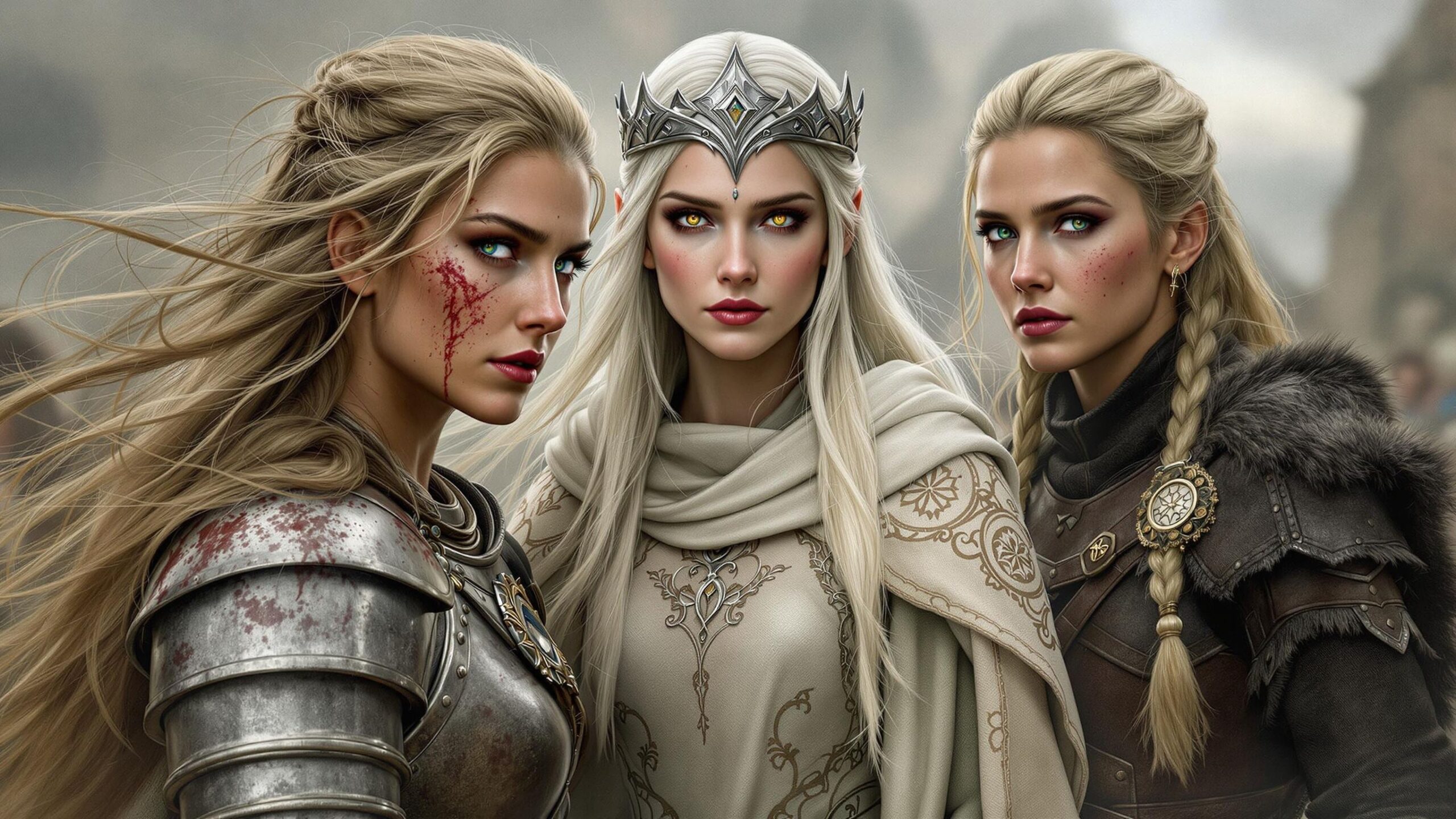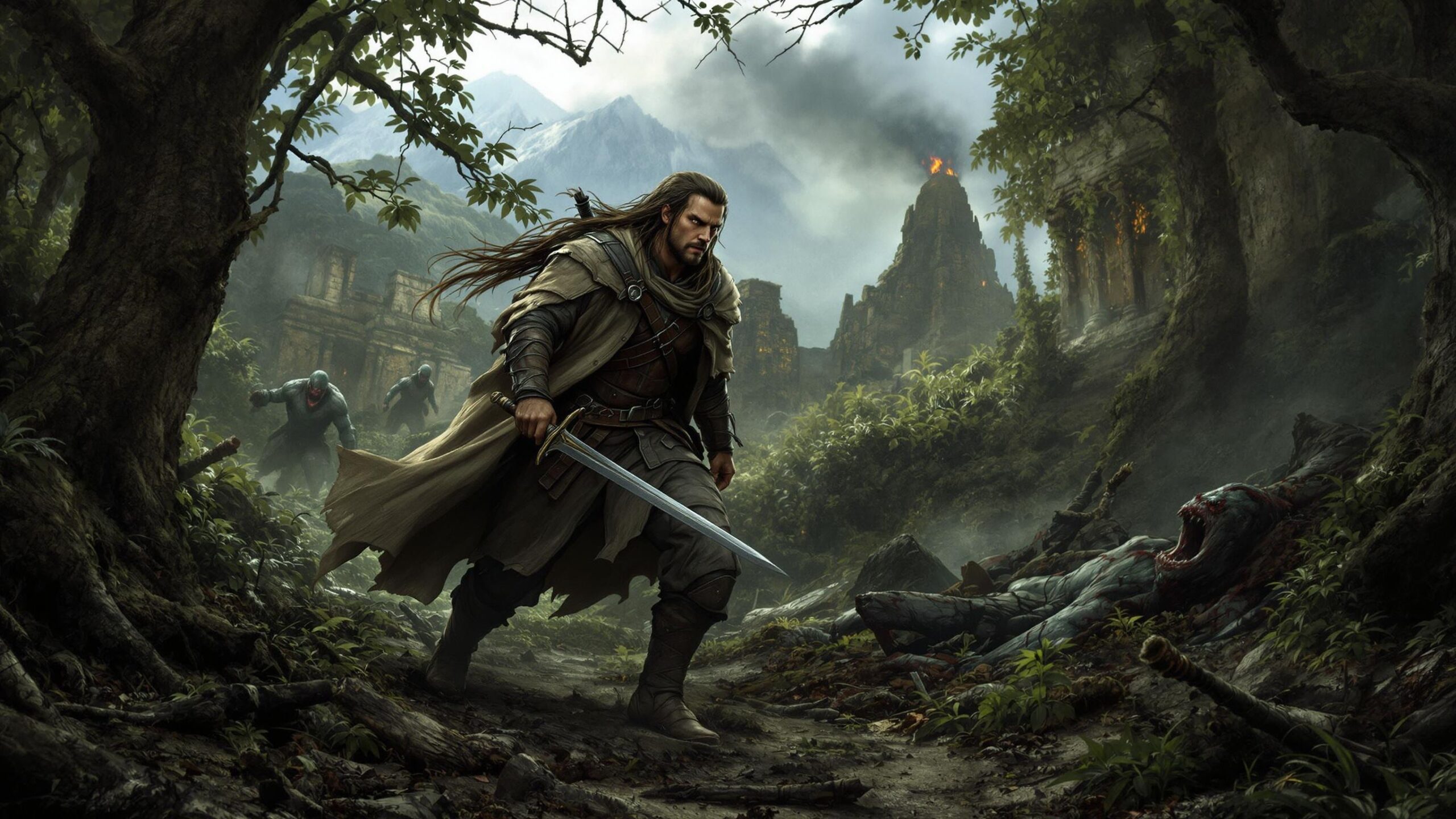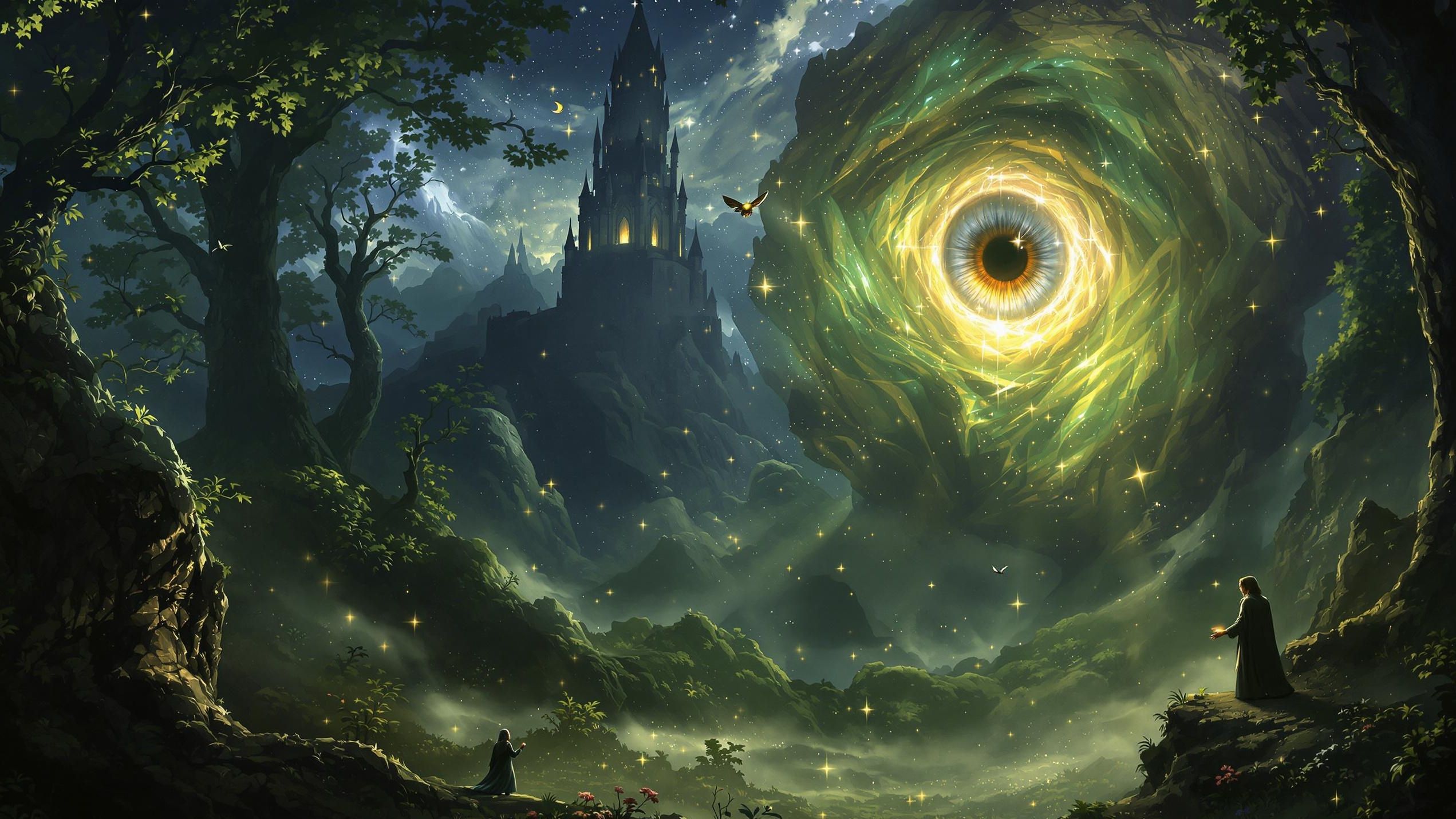Few stories in fantasy literature boast the epic scale, mythic resonance, and deeply emotional stakes of The Lord of the Rings. J.R.R. Tolkien’s masterpiece is not just a tale of good versus evil; it’s a tapestry of personal sacrifice, reluctant heroism, and legendary battles that define the fates of entire races. Throughout the saga, from the windswept heights of Helm’s Deep to the fiery chasms of Mount Doom, characters faced not only monstrous foes but the darker parts of themselves. What makes these battles so iconic isn’t just the swordplay or sorcery—it’s the emotional weight and narrative depth behind each confrontation. Here are the ten best character battles in The Lord of the Rings—not just for their cinematic brilliance, but for the way they reveal the heart and soul of Tolkien’s unforgettable heroes and villains.
#10: Boromir vs. the Uruk-hai
Boromir’s last stand is a moment of fierce redemption and haunting tragedy. After struggling internally with the pull of the Ring and even momentarily succumbing to its temptation, Boromir regains his honor in a blaze of loyalty and sacrifice. He faces a relentless tide of Uruk-hai in the woods of Amon Hen, shielding the young hobbits Merry and Pippin. With each powerful blow of his sword and every horn-blast of Gondor, Boromir proves his mettle as both a warrior and a protector. But it’s not just his martial prowess that makes this battle unforgettable—it’s the image of him taking arrow after arrow, refusing to fall, fighting with the raw defiance of a man who knows he must reclaim his soul. Sean Bean’s portrayal adds incredible depth, infusing Boromir’s final moments with regret, bravery, and grace. His whispered, “I would have followed you, my brother… my captain… my king,” to Aragorn, is one of the most heartbreaking and honorable deaths in cinematic fantasy.
#9: Éowyn and Merry vs. the Witch-king of Angmar
At the Battle of the Pelennor Fields, one of Tolkien’s most prophetic lines— “No man can kill me”—is spectacularly fulfilled by Éowyn, a shieldmaiden of Rohan. Disguised as a man, she steps into battle and delivers the fatal blow to the Witch-king with the help of Merry’s courageous stab. What elevates this fight is not just its visual grandeur, but its thematic triumph. Éowyn represents every overlooked and underestimated soul who dares to defy fate. Her line, “I am no man!” followed by the slaying of the Nazgûl lord, is spine-tingling. It’s not just a clever subversion of prophecy—it’s a declaration of identity, strength, and agency. This scene, layered with foreshadowing and feminine power, remains a defining moment in Tolkien’s epic, showcasing that heroism comes from unexpected places.
#8: Aragorn vs. the Uruk-hai at Helm’s Deep
The Battle of Helm’s Deep is Tolkien’s masterclass in siege warfare, and Aragorn stands at its center, a figure of relentless hope amid overwhelming odds. When he charges out into the downpour, sword gleaming, eyes blazing with defiance, he becomes the living embodiment of the old world’s nobility. His duel against the berserker Uruk-hai wielding a spiked club is particularly memorable—not just for the raw choreography, but for the contrast it presents: the finesse and honor of Aragorn versus the brute savagery of the enemy. Viggo Mortensen’s portrayal captures Aragorn’s controlled ferocity and inner nobility. What few fans know is that during filming, Mortensen broke a toe kicking a helmet in a later scene—but insisted on doing his own stunts, including most of this battle sequence. Aragorn’s determination to defend humanity against extinction begins here in earnest, making this not just a fight, but a symbol of rising courage in dark times.
#7: Gandalf vs. the Balrog
“In the darkness of Khazad-dûm, Gandalf faced a foe from the ancient world: the Balrog of Morgoth.” This battle isn’t just a clash of magical titans—it’s a mythic event that transcends the physical. As the Fellowship flees across the crumbling bridge in Moria, Gandalf turns to face the shadow and flame, declaring the now-immortal words: “You shall not pass!” But that’s only the beginning. The true battle happens far beyond the audience’s view—falling through shadow, ascending the endless stair, battling at the peak of Zirakzigil. Tolkien hints at this godlike conflict with poetic mystery, emphasizing Gandalf’s sacrifice and transformation. When he returns as Gandalf the White, it’s not just resurrection—it’s elevation. This duel is a turning point in the spiritual war against Sauron, showcasing the stakes of the Second Age and the timelessness of good versus evil.
#6: Legolas vs. the Oliphaunt
Though purists debate whether this moment was “Tolkienian” or Hollywood flair, Legolas’ gravity-defying assault on a Mumakil (Oliphaunt) during the Battle of Pelennor Fields remains etched in fans’ memories. Leaping up its tusks, running along its back, shooting down enemies with perfect aim, and finally bringing the beast down singlehandedly—it’s the ultimate display of elven agility and showmanship. His deadpan follow-up to Gimli— “That still only counts as one”—adds comedic timing to sheer awe. What many don’t realize is that Orlando Bloom was injured filming earlier action scenes and performed this sequence with broken ribs. Despite the flashy visuals, the moment encapsulates the blend of artistry and prowess that defines Legolas: elegant, deadly, and always one step above mortal warriors.
#5: The Massacre of Númenor’s Faithful
One of the darkest moments in the Second Age is the fall of Númenor, an island kingdom of Men once blessed with long life and unmatched power. While the downfall of Númenor was orchestrated by the pride of its kings, it was Sauron who fanned the flames of their destruction. Captured and brought to Númenor as a prisoner, Sauron quickly rose through manipulation to become a trusted advisor to King Ar-Pharazôn. He turned the Númenóreans against the Valar and the Elves, convincing them that death was a curse and that immortality could be seized through conquest. But it was not just the kings he corrupted. Sauron led mass executions and burned the sacred White Tree, a symbol of peace and divine favor. The faithful who resisted him were hunted and slaughtered, their resistance drowned under waves of propaganda and religious fanaticism. The eventual divine retribution that sank Númenor beneath the sea was a result of this spiritual collapse. What makes this moment so chilling is that Sauron didn’t conquer the kingdom by force—he poisoned its heart from within. His presence alone turned a paradise into a hellscape, proving that the darkest evil can come not from invasion, but from ideas planted like rot in the soul.
#4: The Use of the Palantíri to Manipulate and Break Minds
The palantíri, the Seeing Stones, were ancient tools gifted by the Elves to Men, intended for communication and wisdom. But under Sauron’s touch, they became weapons of despair. The most well-known victim of this manipulation is Denethor, Steward of Gondor. Through the palantír of Minas Tirith, Sauron fed Denethor curated visions—images of unbeatable enemy forces, hopeless odds, and death. This drove the steward to madness, convincing him that Gondor’s fall was inevitable. His mind was not possessed but poisoned with carefully selected truths that blinded him to hope. Similarly, Saruman also fell under Sauron’s spell through a palantír, believing himself an ally to power rather than a victim of it. These deceptions reflect Sauron’s mastery not of brute strength but psychological warfare. The palantíri became distorted mirrors of fear and submission, and through them, Sauron broke leaders and weakened entire nations without lifting a sword. This method of corruption was subtler, more intimate, and far more dangerous than open war. It shows Sauron’s ability to twist gifts meant for good into sources of ruin.
#3: The Breeding and Use of the Uruk-hai
While often associated with Saruman, the Uruk-hai—the twisted fusion of Orc and Man—are an extension of Sauron’s dark vision. As the original master of orc-kind, Sauron’s legacy of biological and spiritual corruption stretches back to Morgoth’s first defilements. The Uruk-hai are bred for speed, strength, and utter loyalty, capable of moving in sunlight and trained for terror. What makes their creation so horrific is the blend of science, sorcery, and cruelty that birthed them. They are not just soldiers—they are manufactured hatred, given form and sent to wipe out the free peoples. In the Battle of Helm’s Deep and other campaigns, their efficiency is undeniable, but their existence is a war crime in itself. Tolkien never fully detailed how they were made, which only deepens the horror—the implications are foul beyond imagining. Through the Uruk-hai, Sauron and his lieutenants waged war on nature itself, creating a mockery of life to overrun the world. This mass production of sentient, tortured beings exemplify the industrial scale of Sauron’s evil.
#2: The Death of Gil-galad and Elendil at the Last Alliance
The final battle of the Second Age, where the Last Alliance of Elves and Men marched on Mordor, was one of the most tragic victories in Middle-earth’s history. Sauron descended onto the battlefield wielding the One Ring, and in the final confrontation, both Elendil and Gil-galad—the greatest kings of their people—fell to his hand. Their deaths were not just military losses—they were symbolic of the fading of both Elves and the noblest Men. The duel, though only lightly described in the books, is monumental in implication: Sauron physically bested two of the greatest warriors in Middle earth. Even after he was struck down by Isildur, the damage had been done. Gil-galad was the last high king of the Noldor in Middle-earth, and Elendil the first true king of Gondor and Arnor. Their fall left a vacuum that would take an age to mend. This moment defines Sauron’s terror—he ended legacies with a swing of his weapon. Though he was defeated, the cost was nearly everything.
#1: The Creation of the One Ring
The darkest act of Sauron’s long life was the forging of the One Ring in the fires of Mount Doom. Designed to dominate the wearers of all other Rings of Power, it was both a masterpiece of craftsmanship and a soul trap—housing much of Sauron’s own essence. This act represents ultimate control: not just over land or people, but over minds and hearts. The Ring corrupts its bearers not immediately, but slowly, inevitably. It turns desire into obsession, loyalty into paranoia, and hope into despair. That Sauron poured so much of himself into it reveals the totality of his ambition. He didn’t want to rule the world; he wanted to bind it. The Ring is the embodiment of domination, crafted not for governance but enslavement. It is a living symbol of everything Sauron stood for, and its corruptive power lingers long after his physical form is destroyed. In essence, the creation of the Ring is the moment when Sauron transcended the role of a dark lord and became a metaphysical force of temptation and ruin. It remains the most terrifying testament to his will.
Sauron’s legacy in The Lord of the Rings is not one of momentary evil or reckless destruction. His darkness is calculated, enduring, and insidious. From corrupting mighty kings to twisting sacred objects, Sauron represents a villain who thrives on unraveling the very foundations of hope and identity. He doesn’t just break bodies—he breaks spirits. These ten moments serve as chilling reminders of how deep his evil runs, and why, even as a disembodied force, he remains one of the most terrifying figures in all of fantasy literature.




